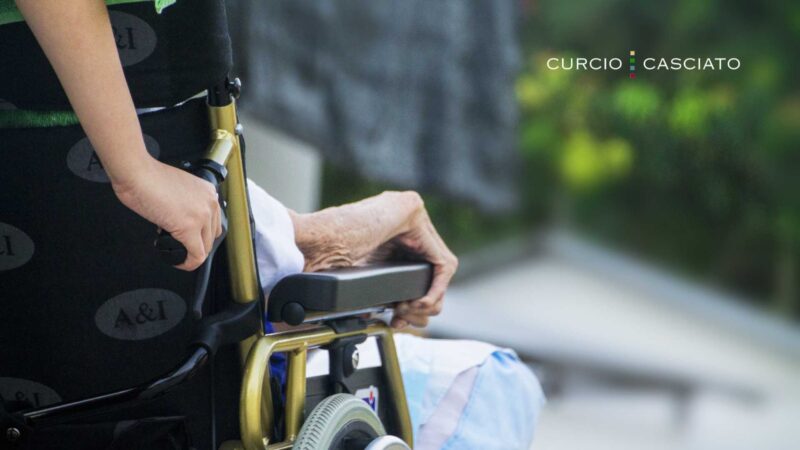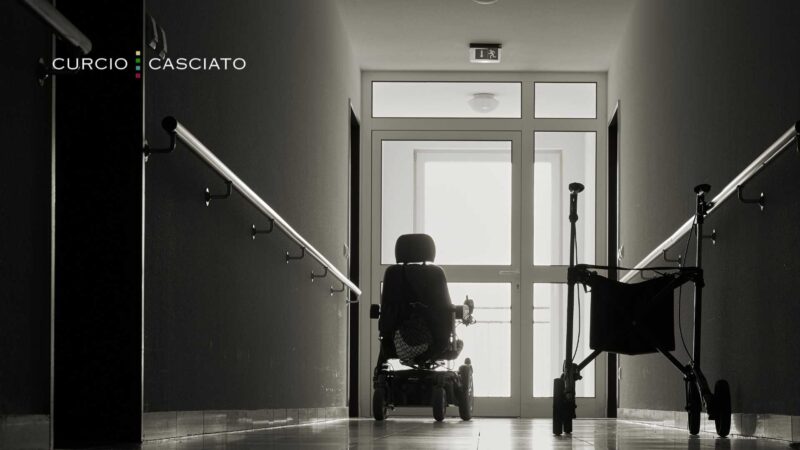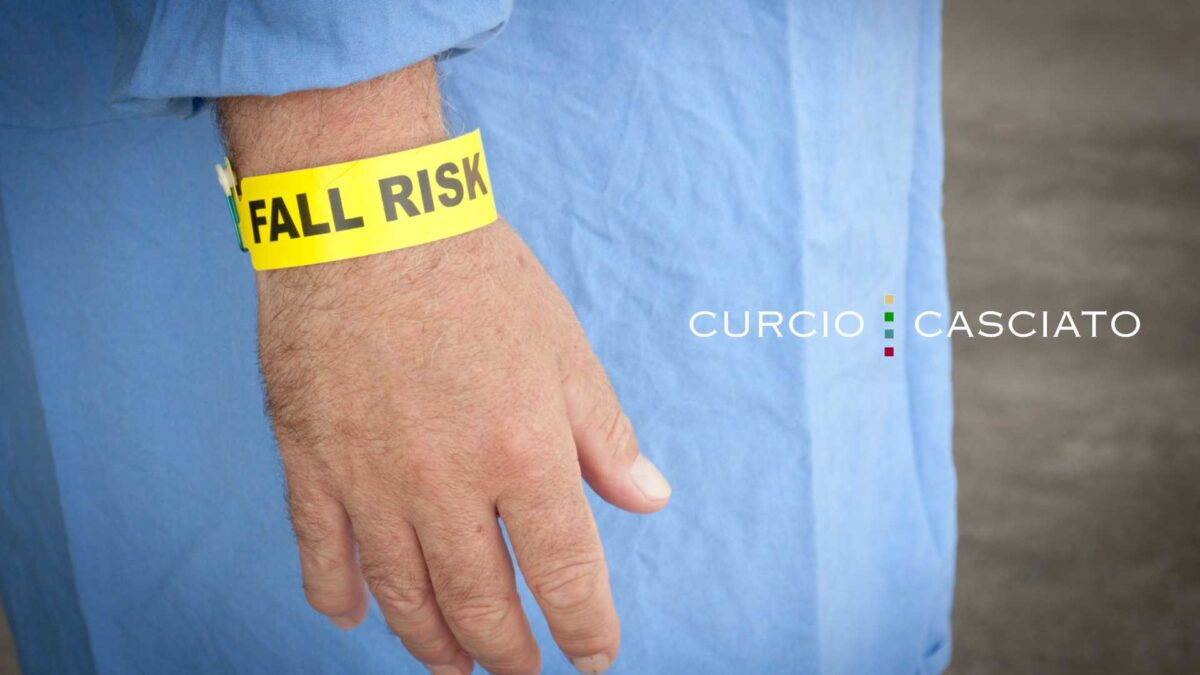Falls are a leading cause of serious injuries among older adults, often resulting in head injuries, fractures, or even death. A fall risk assessment helps healthcare providers and caregivers identify fall risk factors and implement prevention strategies. Whether in primary care settings, nursing homes, or hospitals, fall risk screening is an essential step in reducing the risk of falling and ensuring patient safety.
For additional information, call 312-321-111 to schedule a free consultation with a Chicago lawyer experienced in fall risk assessments.
What Are Fall Risk Assessment Tests?
A fall risk assessment involves various checks to evaluate a person’s risk of falling. Different fall risk assessment tools exist to help healthcare providers determine high-risk individuals and recommend medical treatment to reduce their risk of falls.
Timed Up and Go (TUG) Test
The Timed Up and Go (TUG) test measures mobility problems by having a patient rise from a chair, walk a short distance, and return to a seated position at their usual pace. A longer completion time indicates an increased risk of falling.
Berg Balance Scale (BBS)
The Berg Balance Scale (BBS) assesses balance problems in older adults by having them perform four different positions, including standing on one foot and moving with arms crossed. A lower score indicates a higher risk for falls.
Morse Fall Scale (MFS)
The Morse Fall Scale (MFS) evaluates fall risk factors based on previous falls, medication reviews, and mobility problems. It is commonly used in hospital settings to determine if a patient requires assistive devices or supervision.
Johns Hopkins Fall Risk Assessment Tool (JHFRAT)
The Johns Hopkins Fall Risk Assessment Tool (JHFRAT) classifies patients as low risk, moderate risk, or high risk based on factors such as cognitive test results, blood pressure fluctuations, and ability to stand without assistance.
Hendrich II Fall Risk Model
The Hendrich II Fall Risk Model is widely used in primary care settings to assess fall risk screening factors, including medications, dizziness, and difficulty walking.
STRATIFY (St. Thomas’s Risk Assessment Tool in Falling Elderly Inpatients)
The STRATIFY tool is designed to identify high-risk patients in hospital settings by evaluating history of falls, gait issues, and cognition.
STEADI (Stopping Elderly Accidents, Deaths & Injuries) by the CDC
The STEADI initiative, developed by the Centers for Disease Control and Prevention (CDC), provides guidelines for evaluating patients, offering education, and creating fall prevention programs.
Falls Efficacy Scale (FES)
The Falls Efficacy Scale (FES) measures fear of falling in older adults and helps healthcare providers implement fall prevention strategies based on previous falls.
The 30-Second Chair Stand Test
This test assesses leg strength by having the patient sit and stand from a chair repeatedly for 30 seconds. A lower count indicates a higher risk for falls.
How are Fall Risk Factors Classified in Illinois?
Fall risk factors are categorized into intrinsic (personal) and extrinsic (environmental) risks. Intrinsic factors include age, medications, blood pressure changes, and cognitive decline. Extrinsic factors involve home environment, poor lighting, and lack of safety equipment.

Who is at High Risk of Falling?
Several risk factors contribute to a person being at risk for future falls, particularly among older adults. A history of previous falls within the past year, mobility problems, balance problems, and certain medical conditions all increase the risk of falling.
Healthcare providers assess individuals using fall-risk screening tools to identify those at high fall risk. Factors such as blood pressure fluctuations, cognitive impairment requiring a cognitive test, and the use of multiple medications can further raise the fall risk. Environmental hazards like poor lighting and unsafe home environments also contribute to many falls. To prevent falls, a comprehensive fall risk assessment check should be conducted, allowing for the implementation of fall prevention strategies such as assistive devices, physical therapy, and modifications to living spaces to protect those who have fallen in the past or are at risk of future falls.
What is a Fall Score?
A fall score is a numerical value assigned during a clinical assessment to determine an individual’s risk of falling based on key fall risk factors. Healthcare providers use standardized fall risk assessment tests and fall risk screening tools, such as the Morse Fall Scale (MFS), Johns Hopkins Fall Risk Assessment Tool (JHFRAT), and STRATIFY, to generate this score. The fall score considers multiple variables, including previous falls in the past year, balance or mobility issues, use of an assistive device, cognition problems, and certain medicines that may cause dizziness or low blood pressure.
A high fall risk score predicts a greater likelihood of future falls and requires immediate fall prevention steps. Low-risk individuals may need basic precautions like basic modifications, while those at high risk might require assistance from a physical therapist or occupational therapist or intervention from an eye doctor to address vision impairments.
Healthcare providers working at hospitals, nursing homes, and assisted living facilities use fall scores to develop fall prevention measures to reduce or stop elderly accidents and improve patient safety. Regular fall risk assessment checks and updates ensure that changes in mobility, cognitive function, or medications are accounted for to prevent future falls.
How Healthcare Providers Should Conduct Fall Risk Assessments in Illinois Nursing Home and Hospital Settings
Healthcare providers in Illinois should perform risk assessments upon hospital admission and regularly in nursing care facilities. These include fall risk screening, physical therapist evaluations, and implementing steps to reduce risks.
How to Prevent Falls in Elderly Patients
According to the Centers for Disease Control, fall prevention includes physical or occupational therapist interventions, tai chi for balance and gait improvement, and home environment modifications like removing obstacles, like furniture, and ensuring older adults with issues walking have devices, such as canes or walkers to reduce risk factors.
Common Fall Injuries in Chicago Nursing Homes

Head Injuries
Head injuries can result in serious consequences, especially for older adults at a higher risk of falling and serious complications. Fall risk factors and lack of measures to mitigate the risk of falls in hospitals or nursing care centers can contribute to accidents. If failure to conduct a fall risk assessment or neglect leads to accidents, our Chicago brain injury attorneys can help secure compensation for health expenses, physical therapist assistance, and long-term care needs. Filing a claim ensures that healthcare providers who fail to address fall risk assessments pay to help your loved one get healthy again.
Broken Bones
Broken bones and fractures are common among older adults who fall, often leading to long-term issues with walking and gait. Ignoring risk factors and providing a lack of prevention measures increases the risk of falling in hospitals, nursing care facilities, and other health and care settings. Hip, wrist, and spinal fractures are common, requiring extensive rehabilitation. If negligent healthcare providers caused the accidents, victims may file an orthopedic injury claim in Chicago to recover damages. Our Chicago broken bone injury lawyers can assist individuals in seeking compensation and ensuring that negligent healthcare providers are responsible for preventable health outcomes.
Organ Damage
Organ damage is an often overlooked consequence of negligent fall risk assessments, especially among older adults. This can lead to internal bleeding or death. Risk factors such as balance and gait issues and medication side effects increase the risk of falling. If high-risk patients are injured because of negligence in a hospital, nursing facility, or other healthcare setting, a Chicago organ damage lawyer can provide legal support.
Knee Damage
Older adults and individuals with balance or gait issues are at a high risk of sustaining knee damage due to lacking fall risk assessments and lax healthcare settings. If accident cases occur because of negligent healthcare providers, a Chicago knee injury lawyer can provide skilled legal support for victims seeking compensation.
Spinal Cord Damage
Spine damage from falls can lead to life-altering disabilities. This is a leading cause of preventable harm, especially among older adults and individuals with balance and gait issues. When accidents occur due to unsafe conditions or lack of proper fall risk assessments, victims may be entitled to compensation. Speaking with a spinal cord injury lawyer in Chicago is the first step in getting the resources needed to regain the prior quality of life.
Wrongful Death
Wrongful death from falling in health-related centers is often the result of neglect, insufficient fall risk assessments, or failure to provide support for individuals at high or moderate risk of falling. Patients identified with osteoporosis, walking issues, or a history of accidents need careful monitoring, proper walking assistance, chairs with support, and regular gait evaluations to mitigate fall risk factors for patients at high risk. When healthcare providers fail to implement research-backed prevention measures, such as exercise programs or vitamin supplements for bone health, the risk of falls increases.
A hospital or nursing home wrongful death lawyer in Chicago, IL, can identify negligence, review recorded details, and secure the necessary resources.
Can You Sue a Nursing Home For a Fall in Illinois?
If a nursing care facility fails to administer fall risk assessments or fails to prevent elderly patients’ falls, high-fall-risk patients often suffer preventable harm. Older adults with a history of many falls or difficulty standing on one foot require special care, as their risk of falling increases due to balance and strength issues.
Healthcare providers must follow research-backed guidelines established by the American Geriatrics Society and Centers for Disease Control, using standardized fall risk assessment tools to identify high-risk patients. When facilities neglect management, fail to provide the necessary support or ignore fall risk factors, residents may be seriously injured.
About half of residents report feeling unsteady, which should prompt providers to evaluate patients regarding their gait, walking ability, and overall health. If negligence is involved—such as inadequate supervision, poor intervention development, or failure to use assistive devices—families may have grounds to sue for the inevitable harm.
Taking legal action involves reviewing medical records, accident history, and fall risk assessment checks. We can help determine whether the nursing home’s failure in predicting and preventing the fall justifies a legal claim. Nursing facilities must be held accountable for failing to maintain safety. Filing a lawsuit can help prevent future neglect while securing the necessary resources for surgery, care, and physical therapist bills
Our Chicago nursing home fall lawyers handle cases for various types of fall risk assessment negligence. If you believe a lack of fall risk assessments caused an accident or a healthcare provider was negligent in assessing risk factors, call for a free consultation.
Can You File a Lawsuit If an Elderly Patient Falls in a Hospital in Illinois?
If an elderly patient falls in an Illinois hospital, they can file a lawsuit if healthcare providers fail to take proper fall prevention measures. Hospitals are required to conduct fall risk assessments and implement prevention measures for older adults who are at high risk due to mobility issues, a history of accidents, or underlying health conditions.
Healthcare providers must also perform routine fall risk assessment screening, including basic cognitive tests and fall risk assessment tests, such as the TUG test, to identify patients who need additional supervision or assistive devices to mitigate their risk of falling.
If a hospital neglects to address fall risk factors, such as poor lighting, dizziness, or improper use of bed safety, they may be held liable for damages. A failure to provide a proper fall risk assessment, ensure adequate guidance, or adequately carry out clinical assessment protocols may constitute negligence.
Patients who have fallen within the past year or exhibit common symptoms of being at high risk for falls should receive extra precautions. Ignoring common symptoms increases the risk of falling.
A successful lawsuit requires evidence that negligence led to the accident and resulting harm. Medical treatment records, gait assessments, and expert testimony from a physical therapist or occupational therapist can help establish fault. Hospitals must follow guidelines from agencies like the CDC and American Geriatrics Society to maintain patient safety. Filing a claim may provide compensation for medical treatment, including costs for physical and occupational therapists, and other damages while ensuring better patient care in the future.
We understand how to sue a hospital in Illinois and have extensive experience holding negligent healthcare providers accountable for preventable harm. Our Chicago hospital negligence lawyers can help determine if a faulty fall risk assessment test puts your loved one at an increased risk of danger.
What to Do After a Fall Accident in Chicago, IL
- Seek medical care immediately for serious injuries.
- Report the incident to the facility.
- Secure medical records.
- Contact a Chicago personal injury lawyer for legal assistance.
How a Chicago Elderly Accident Lawyer Can Help
Our personal injury lawyers in Chicago, IL, can investigate fall risk factors, gather evidence, and work to ensure responsible healthcare providers and facilities are accountable for negligent fall risk assessments. If you or a loved one suffered a serious injury due to a fall risk, an experienced attorney can help you seek the compensation you deserve.
For a free consultation and additional information, contact the Chicago fall risk assessment lawyers at Curcio & Casciato.



